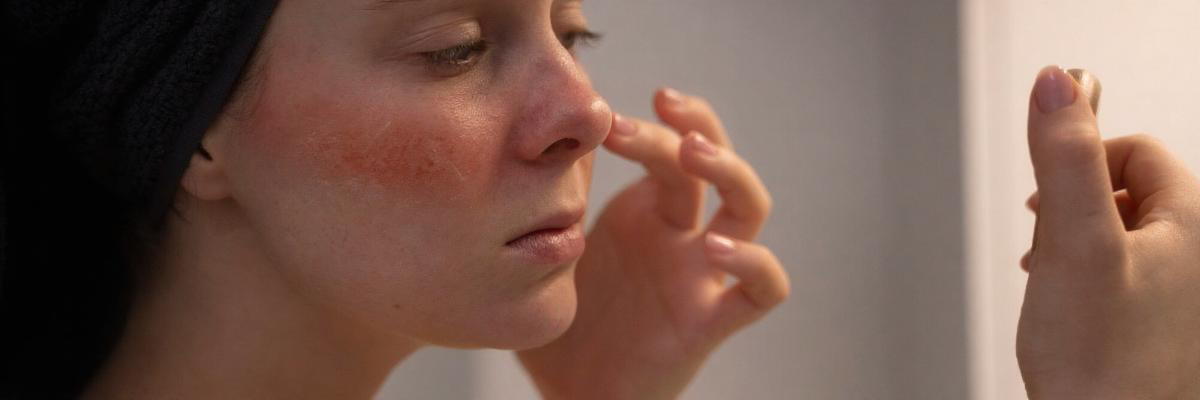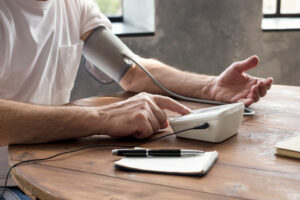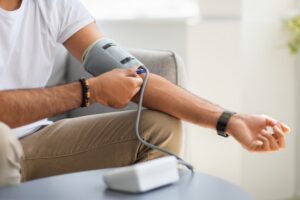Redness, bumps, and pustules on the face can be frustrating, and it is often difficult to tell the cause. Many people mistakenly self-diagnose their condition, leading to ineffective treatments. The rosacea vs acne debate is common because both conditions can present with similar-looking blemishes. However, they are distinct skin disorders with different underlying causes and require different management strategies. Understanding the key signs that distinguish one from the other is the first, most important step toward achieving clearer, calmer skin with the help of a professional.
At Doral Health & Wellness, we are proud of our commitment to providing integrated and comprehensive health services. Our team offers clear, detailed information and supportive care to help you make informed decisions about your dermatological health. We are dedicated to the well-being of our patients.
Key Distinctions in the Rosacea vs. Acne Debate
While both conditions affect the skin on the face, a closer look at the specific symptoms, their location, and your personal triggers can offer important clues. A consultation with a qualified skin doctor is essential for a definitive diagnosis.
What is Acne?
Acne vulgaris is an inflammatory condition of the skin’s oil glands and hair follicles. It occurs when follicles become clogged with oil (sebum) and dead skin cells, creating an environment where bacteria can thrive, leading to inflammation and blemishes.
Key Signs of Acne:
- Comedones – This is the defining feature of acne. Comedones include blackheads (open clogged pores) and whiteheads (closed clogged pores). Rosacea does not cause comedones.
- Variety of Blemishes – Acne can present as a mix of papules (small red bumps), pustules (pus-filled bumps), nodules, and cysts.
- Location – It most commonly appears in the “T-zone” (forehead, nose, and chin) but can also affect the chest, back, and shoulders.
- Age of Onset – Acne typically begins during puberty due to hormonal fluctuations, though adult acne is also common.
What is Rosacea?
Rosacea is a chronic inflammatory skin condition that causes persistent redness and flushing. The exact cause is unknown, but it is believed to involve a combination of genetic, environmental, and immune system factors.
Key Signs of Rosacea:
- Persistent Redness and Flushing – The hallmark of rosacea is a background of redness across the central face (cheeks, nose, forehead, and chin) that can come and go in flushing episodes.
- Visible Blood Vessels – Small, broken blood vessels (telangiectasias) often appear on the surface of the skin.
- Bumps and Pustules – Rosacea can cause red bumps and pus-filled pimples that look similar to acne, but there are no blackheads.
- Triggers – Symptoms often flare in response to specific triggers, such as sun exposure, spicy foods, alcohol, stress, or extreme temperatures.
- Age of Onset – Rosacea typically develops after age 30.
Getting an Accurate Diagnosis: The Role of a Dermatologist
Because treatments for rosacea vs acne are very different, an accurate diagnosis is critical. Using acne treatments on rosacea can often make redness and irritation worse. A professional evaluation is non-negotiable for effective care.
What to Expect at Your Appointment
When you visit a specialist, perhaps one you find by searching for a “dermatologist near me” or “skin doctor near me,” they will perform a thorough evaluation.
- Visual Examination – A trained professional can often distinguish between the two conditions based on a careful visual inspection of your skin, looking for tell-tale signs like comedones (acne) or persistent background redness (rosacea).
- Symptom and History Review – Your doctor will ask about when your symptoms started, what makes them worse, and your family history. Discussing your triggers is particularly important for diagnosing rosacea.
- Ruling Out Other Conditions – In some cases, your doctor may need to rule out other skin conditions like lupus or allergic reactions that can also cause facial redness.
A trusted skin doctor in NY can provide the expertise needed for a precise diagnosis.
Comparing Treatment Approaches
Once diagnosed, your treatment plan will be tailored to your specific condition.
Acne Treatment
The goal of acne treatment is to unclog pores, reduce oil production, and kill bacteria.
- Topical Treatments – Retinoids (like tretinoin), benzoyl peroxide, and topical antibiotics are common first-line treatments.
- Oral Medications – For more severe cases, a skin doctor may prescribe oral antibiotics, hormonal therapies (like birth control pills), or isotretinoin.
Rosacea Treatment
Rosacea management focuses on controlling inflammation, reducing redness, and avoiding triggers.
- Trigger Management – Identifying and avoiding personal triggers is a cornerstone of rosacea care.
- Topical Medications – Prescription creams and gels containing ingredients like metronidazole, azelaic acid, or ivermectin help reduce inflammation and bumps.
- Oral Antibiotics – Low-dose oral antibiotics are often used for their anti-inflammatory properties rather than to kill bacteria.
- Laser and Light Therapies – A search for the “best dermatologist in New York” can connect you with specialists who offer laser treatments to effectively reduce persistent redness and visible blood vessels.
If you reside in our area, finding a “skin doctor brooklyn” is a convenient first step toward getting professional care. The “best dermatologist in New York” will offer a comprehensive plan.
Understanding the differences between rosacea vs acne is crucial for anyone struggling with facial redness and blemishes. While acne is defined by clogged pores and comedones, rosacea is characterized by persistent redness and flushing. Do not guess which one you have. Seeking a definitive diagnosis from a qualified dermatologist or skin doctor near me is the most effective path to finding the right treatment and achieving healthier, more comfortable skin.
For expert dermatological care and to receive a comprehensive evaluation for your skin concerns, contact Doral Health & Wellness today at 1-718-365-2555 or visit us at 1797 Pitkin Avenue, Brooklyn, New York 11212. Our team of dedicated professionals is here to provide the supportive, personalized care you need to find answers and relief. For general information about Doral Health & Wellness services, you can contact or email info@doralhw.org.






